- Home
- Mary Higgins Clark
I 've Heard That Song Before
I 've Heard That Song Before Read online
I 've Heard That Song Before
Mary Higgins Clark
When Kay Lansing marries wealthy widower Peter Carrington, she is well aware of the rumours surrounding the mysterious death of Peter's first wife Grace, who was found floating in the family pool ten years ago, pregnant at the time. Kay also discovers that Peter is a chronic sleepwalker who suffers from periodic nightmares. When the police arrive at her doorstep with a warrant for Peter's arrest in connection with another murder – that of a woman Peter had escorted to a high school senior prom twenty-two years ago – Kay begins to fear that she has married a sleepwalking murderer, and she resolves to find out the truth behind the puzzling deaths. But are the two deaths linked? And why does a melody that Kay cannot identify keep playing in her head every time she approaches the family chapel?
Mary Higgins Clark
I 've Heard That Song Before
Copyright © 2007 by Mary Higgins Clark
Acknowledgments
Writing is essentially a lonely occupation. A writer is blessed who has people who support and encourage along the way. When I begin to tell the tale, my forever editor, Michael V. Korda, and senior editor Chuck Adams continue to cheer and advise me. My thanks always to them and to Lisl Cade my publicist, my agent Sam Pinkus, and Associate Director of Copyediting Gypsy da Silva and her special team: Joshua Cohen and Jonathan Evans.
Kudos and thanks to my family, children, and grandchildren, to Himself, the ever-perfect John Conheeney, to my closeknit supporters Agnes Newton, Nadine Petry, and Irene Clark. You’re a grand group, and I love you all.
And now, my dear readers, I hope you enjoy this story.
For Marilyn
My Firstborn Child and Very Dear Friend
With love
Prologue
My father was the landscaper for the Carrington estate. With fifty acres, it was one of the last remaining private properties of that size in Englewood, New Jersey, an upscale town three miles west of Manhattan via the George Washington Bridge.
One Saturday afternoon in August twenty-two years ago, when I was six years old, my father decided, even though it was his day off, that he had to go there to check on the newly installed outside lighting. The Carringtons were having a formal dinner party that evening for two hundred people. Already in trouble with his employers because of his drinking problem, Daddy knew that if the lights placed throughout the formal gardens did not function properly, it might mean the end of his job.
Because we lived alone, he had no choice except to take me with him. He settled me on a bench in the garden nearest the terrace with strict instructions to stay right there until he came back. Then he added, “I may be a little while, so if you have to use the bathroom, go through the screen door around the corner. You’ll see the staff powder room just inside it.”
That sort of permission was exactly what I needed. I had heard my father describe the inside of the great stone mansion to my grandmother, and my imagination had gone wild visualizing it. It had been built in Wales in the seventeenth century and even had a hidden chapel where a priest could both live and celebrate Mass in secrecy during the era of Oliver Cromwell’s bloody attempt to erase all traces of Catholicism from England. In 1848 the first Peter Carrington had the mansion taken down and reassembled stone by stone in Englewood.
I knew from my father’s description that the chapel had a heavy wooden door and was located at the very end of the second floor.
I had to see it.
I waited five minutes after he disappeared into the gardens and then raced through the door he had pointed out. The back staircase was to my immediate right, and I silently made my way upstairs. If I did encounter anyone, I planned to say that I was looking for a bathroom, which I persuaded myself was partially true.
On the second floor, with rising anxiety I tiptoed down one carpeted hallway after another as I encountered a maze of unexpected turns. But then I saw it: the heavy wooden door my father had described, so out of place in the rest of the thoroughly modernized house.
Emboldened by my luck in having encountered no one in my adventure, I ran the last few steps and rushed to open the door. It squeaked as I tugged at it, but it opened just enough for me to squeeze through.
Being in the chapel was like going back in time. It was much smaller than I’d expected. I had pictured it as similar to the Lady Chapel in St. Patrick’s Cathedral, where my grandmother always stopped to light a candle for my mother, on the rare occasions when we shopped in New York. She never failed to tell me how beautiful my mother had looked the day she and my father were married there.
The walls and floor of this chapel were built of stone, and the air I was breathing felt damp and cold.
A nicked and peeling statue of the Virgin Mary was the room’s only religious artifact, and a battery-lit votive candle in front of it provided the only dim and shadowy lighting. Two rows of wooden pews faced the small wooden table that must have served as an altar.
As I was taking it all in, I heard the door begin to squeak and I knew someone was pushing it open. I did the only thing I could do-I ran between the pews and dropped to the ground, then ostrichlike buried my face in my hands.
From the voices I could tell that a man and a woman had entered the chapel. Their whispers, harsh and angry, echoed against the stone. They were arguing about money, a subject I knew well. My grandmother was always sniping at my father, telling him that if he kept up the drinking there wouldn’t be a roof over his head or mine.
The woman was demanding money, and the man was saying that he already had paid her enough. Then she said, “This will be the last time, I swear,” and he said, “I heard that song before.”
I know my memory of that moment is accurate. From the time I could understand that, unlike my friends in kindergarten, I did not have a mother, I had begged my grandmother to tell me about her, every single thing she could remember. Among the memories my grandmother shared with me was one of my mother starring in the high school play and singing a song called “I Heard That Song Before.” “Oh, Kathryn, she sang it so beautifully. She had a lovely voice. Everyone clapped so long and shouted, ‘encore, encore.’ She had to sing it again.” Then my grandmother would hum it for me.
Following the man’s remark, I could not hear the rest of what was said except for her whispered, “Don’t forget,” as she left the chapel. The man had stayed; I could hear his agitated breathing. Then, very softly, he began to whistle the tune of the song my mother sang in the school play. Looking back, I think he may have been trying to calm himself. After a few bars, he broke off and left the chapel.
I waited for what seemed forever, then I left, too. I hurried down the stairs and back outside, and, of course, never told my father that I’d been in the house or what I had heard in the chapel. But the memory never faded, and I am sure of what I heard.
Who those people were, I don’t know. Now, twenty-two years later, it is important to find out. The only thing that I have learned for certain, from all of the accounts of that evening, is that there were a number of overnight guests staying in the mansion, as well as five in household help, and the local caterer and his crew. But that knowledge may not be enough to save my husband’s life, if indeed it deserves to be saved.
1
I grew up in the shadow of the Lindbergh baby kidnapping.
By that I mean I was born and raised in Englewood, New Jersey. In 1932, the grandson of Englewood ’s most prominent citizen, Ambassador Dwight Morrow, was kidnapped. Furthermore, the baby’s father happened to be the most famous man in the world at the time, Col. Charles Lindbergh, who had flown the first solo flight across the Atlantic Ocean in his single-engine plane, the Spirit of
St. Louis.
My grandmother, who was eight years old at that time, remembers the blazing headlines, the crowds of reporters who congregated outside Next Day Hill, the Morrow estate, the arrest and trial of Bruno Hauptmann.
Time passed, memories faded. Today Englewood ’s most prominent residence is the Carrington mansion, the stone-castlelike structure that I had stolen into as a child.
All these thoughts went through my mind as, for the second time in my life, I went inside the gates of the Carrington estate. Twenty-two years, I thought, remembering the inquisitive six-year-old I had been. Maybe it was the memory of my father being dismissed by the Carringtons only a few weeks later that made me suddenly feel self-conscious and awkward. The bright October morning had changed into a windy, damp afternoon, and I wished that I had worn a heavier jacket. The one I had chosen now seemed much too light both in color and fabric.
Instinctively, I parked my secondhand car to the side of the imposing driveway, not wanting it to be the object of anyone’s scrutiny. One hundred and eight thousand miles on the speedometer takes a lot of starch out of a car, even one recently washed and mercifully free of dents.
I had twisted my hair into a bun, but the wind tore at it as I walked up the steps and rang the bell. A man who looked to be in his mid-fifties, with a receding hairline and narrow, unsmiling lips, opened the door. He was dressed in a dark suit, and I wasn’t sure whether he was a butler or a secretary, but before I could speak, without introducing himself, he said that Mr. Carrington was expecting me and that I should come in.
The wide entrance hall was illuminated by light that filtered through leaded stained-glass windows. A statue of a knight in armor stood next to a medieval tapestry depicting a battle scene. I longed to examine the tapestry, but instead I dutifully followed my escort down a corridor to the library.
“Miss Lansing is here, Mr. Carrington,” he said. “I’ll be in the office.” From that remark I guessed he was an assistant.
When I was little I used to draw pictures of the kind of home I’d love to live in. One of my favorite rooms to imagine was the one in which I would read away my afternoons. In that room there was always a fireplace and bookshelves. One version included a comfortable couch, and I’d draw myself curled up in the corner, a book in my hand. I’m not suggesting I’m any kind of artist because I’m not. I drew stick figures and the bookshelves were uneven, the carpet a splotched multicolored copy of one I’d seen in the window of an antique rug store. I could not put the exact image in my mind on paper, but I knew what I wanted. I wanted the kind of room I was standing in now.
Peter Carrington was seated in a wide leather chair, his feet on a hassock. The lamp on the table beside him not only illuminated the book he was reading but spotlighted his handsome profile.
He was wearing reading glasses, which sat on the bridge of his nose and slipped off when he looked up. Retrieving them, he laid them on the table, removed his feet from the hassock, and stood. I had caught occasional glimpses of him in town and had seen his picture in the papers, so I had an impression of him, but being in the same room with him was different. There was a quiet authority about Peter Carrington that he retained even as he smiled and extended his hand.
“You write a persuasive letter, Kathryn Lansing.”
“Thank you for letting me stop in, Mr. Carrington.”
His handshake was firm. I knew he was studying me just as I was studying him. He was taller than I had realized, with the narrow body of a runner. His eyes were more gray than blue. His thin, even-featured face was framed by dark brown hair that was a shade long but which suited him well. He was wearing a dark brown cardigan with a rust thread running through the weave. If I had been asked to guess his job from his appearance alone, I would have said college professor.
I knew he was forty-two years old. That meant he would have been about twenty the day that I crept into this house. I wondered if he had been home for that party. It was possible, of course-in late August he might not yet have gone back to Princeton, where he had been a student. Or, if he had already started school, he might have come home for the weekend. Princeton was only an hour-and-a-half drive away.
He invited me to sit down in one of the two matching armchairs near the fireplace. “I’ve been wanting an excuse to have a fire,” he said. “This afternoon the weather cooperated.”
I was more than ever conscious of the fact that my lime green jacket was more suitable to an August afternoon than to midautumn. I felt a strand of hair slip over my shoulder and tried to twist it back into the bun that was supposed to anchor it.
I have a master’s in library science, my passion for books having made that a natural career choice. Since graduation five years ago, I’ve been working at the Englewood Public Library and am heavily involved in our community’s literacy project.
Now I was in this impressive library, “with my hat in my hand,” as my grandmother would say. I was planning a fundraiser for the literacy program and wanted to make it spectacular. There was one way I was sure I could get people to pay three hundred dollars for a cocktail reception, and that would be if it were held in this house. The Carrington mansion had become part of the folklore of Englewood and the surrounding communities. Everyone knew its history and that it had been transported from Wales. I was certain that the prospect of being inside it would make all the difference in whether or not we could have a sellout event.
I usually feel pretty comfortable in my own skin, but sitting there, sensing that those gray eyes were taking my measure, I felt flustered and ill at ease. Suddenly I felt, once again, like the daughter of the landscaper who drank too much.
Get over it, I told myself, and stop with the “gee-whiz” nonsense. Giving myself a brisk mental shake, I began my well-rehearsed solicitation. “Mr. Carrington, as I wrote you, there are many good causes, meaning many reasons for people to write checks. Of course it’s impossible for anyone to support everything. Quite frankly, these days even well-off people feel tapped out. That’s why it’s essential to our event to find a way to get people to write a check for us.”
That was when I launched into my plea for him to allow us to have a cocktail party in this house. I watched as his expression changed, and I saw the “no” word forming on his lips.
He put it gracefully. “Miss Lansing,” he began.
“Please call me Kay.”
“I thought your name was Kathryn.”
“On my birth certificate and to my grandmother.”
He laughed. “I understand.” Then he began his polite refusal. “Kay, I’d be happy to write a check…”
I interrupted him. “I’m sure you would. But as I wrote, this is more than just about money. We need volunteers to teach people how to read, and the best way to get them is to make them want to come to an affair, and then sign them up. I know a great caterer who has promised to reduce his price if the event is held here. It would just be for two hours, and it would mean so much to so many people.”
“I have to think about it,” Peter Carrington said as he stood up.
The meeting was over. I thought quickly and decided there was nothing to lose by adding one final thing: “Mr. Carrington, I’ve done of lot of research about your family. For generations this was one of the most hospitable homes in Bergen County. Your father and grandfather and great-grandfather supported local community activities and charities. By helping us now, you could do so much good, and it would be so easy for you.”
I had no right to feel so terribly disappointed, but I did. He didn’t respond, and without waiting for him or his assistant to show me out, I retraced my steps to the door. I did pause to take a quick glance to the back of the house, thinking of the staircase I had sneaked up all those years ago. Then I left, sure that I had made my second and final visit to the mansion.
Two days later Peter Carrington’s picture was on the cover of Celeb, a national weekly gossip rag. It showed him coming out of the police station twenty-two years ago, after bein
g questioned about the disappearance of eighteen-year-old Susan Althorp, who had vanished following the formal dinner dance she had attended at the Carrington mansion. The blaring headline, IS SUSAN ALTHORP STILL ALIVE?, was followed by the caption under Peter’s picture: “Industrialist still a suspect in the disappearance of debutante Susan Althorp, who would be celebrating her fortieth birthday this week.”
The magazine had a field day rehashing details of the search for Susan and, since her father had been an ambassador, comparing the case to the kidnapping of the Lindbergh baby.
The article included a summary of the circumstances surrounding the death of Peter Carrington’s pregnant wife, Grace, four years ago. Grace Carrington, known for drinking heavily, had given a birthday party for Carrington’s stepbrother, Richard Walker. Carrington had arrived home after a twenty-three-hour flight from Australia, observed her condition, grabbed the glass out of her hand, dumped the contents on the carpet, and angrily demanded, “Can’t you have a little mercy on the child you’re carrying?” Then, claiming exhaustion, he went up to bed. In the morning, the housekeeper found the body of Grace Carrington, still dressed in a satin evening suit, at the bottom of the swimming pool. An autopsy showed that she was three times over the limit of being legally drunk. The article concluded, “Carrington claimed he went to sleep immediately and did not awaken until the police responded to the 911 call. MAYBE. We’re conducting an opinion poll. Go to our Web site and let us know what you think.”
A week later, at the library, I received a call from Vincent Slater, who reminded me that I had met him when I had an appointment with Peter Carrington.
“Mr. Carrington,” he said, “has decided to permit the use of his home for your fund-raiser. He suggests that you coordinate the details of the event with me.”

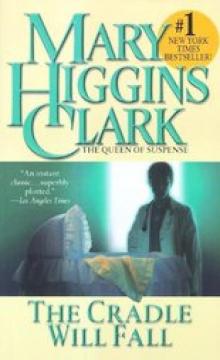 Clark, Mary Higgins 03 - The Cradle Will Fall
Clark, Mary Higgins 03 - The Cradle Will Fall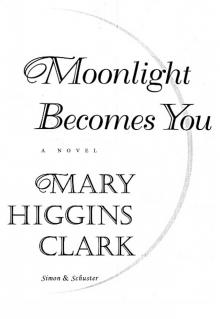 Moonlight Becomes You
Moonlight Becomes You No Place Like Home
No Place Like Home I've Got My Eyes on You
I've Got My Eyes on You I've Got You Under My Skin
I've Got You Under My Skin The Lottery Winner
The Lottery Winner As Time Goes By
As Time Goes By Nighttime Is My Time
Nighttime Is My Time Where Are the Children?
Where Are the Children? The Lost Years
The Lost Years Two Little Girls in Blue
Two Little Girls in Blue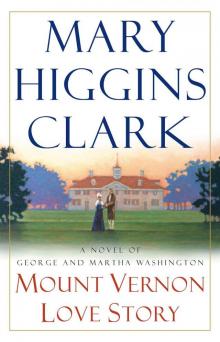 Mount Vernon Love Story: A Novel of George and Martha Washington
Mount Vernon Love Story: A Novel of George and Martha Washington All by Myself, Alone
All by Myself, Alone The Melody Lingers On
The Melody Lingers On Just Take My Heart
Just Take My Heart The Second Time Around
The Second Time Around A Cry in the Night
A Cry in the Night Deck the Halls
Deck the Halls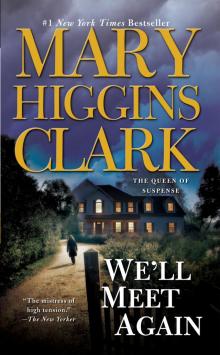 We'll Meet Again
We'll Meet Again Before I Say Goodbye
Before I Say Goodbye Piece of My Heart
Piece of My Heart My Gal Sunday
My Gal Sunday Weep No More, My Lady
Weep No More, My Lady Daddy's Little Girl
Daddy's Little Girl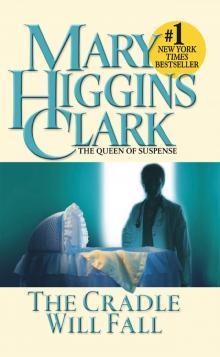 The Cradle Will Fall
The Cradle Will Fall Manhattan Mayhem: New Crime Stories From Mystery Writers of America
Manhattan Mayhem: New Crime Stories From Mystery Writers of America Where Are You Now?
Where Are You Now? Loves Music, Loves to Dance
Loves Music, Loves to Dance While My Pretty One Sleeps
While My Pretty One Sleeps Pretend You Don't See Her
Pretend You Don't See Her I'll Be Seeing You
I'll Be Seeing You Let Me Call You Sweetheart
Let Me Call You Sweetheart Remember Me
Remember Me Silent Night
Silent Night Kitchen Privileges
Kitchen Privileges All Around the Town
All Around the Town Death Wears a Beauty Mask and Other Stories
Death Wears a Beauty Mask and Other Stories I'll Walk Alone
I'll Walk Alone The Shadow of Your Smile
The Shadow of Your Smile Kiss the Girls and Make Them Cry
Kiss the Girls and Make Them Cry Manhattan Mayhem
Manhattan Mayhem Deck the Halls (Holiday Classics)
Deck the Halls (Holiday Classics) The Cinderella Murder
The Cinderella Murder All Dressed in White
All Dressed in White You Don't Own Me
You Don't Own Me The Christmas Thief
The Christmas Thief Before I Say Good-Bye
Before I Say Good-Bye Dashing Through the Snow
Dashing Through the Snow The Sleeping Beauty Killer
The Sleeping Beauty Killer Mount Vernon Love Story
Mount Vernon Love Story Santa Cruise
Santa Cruise I 've Heard That Song Before
I 've Heard That Song Before